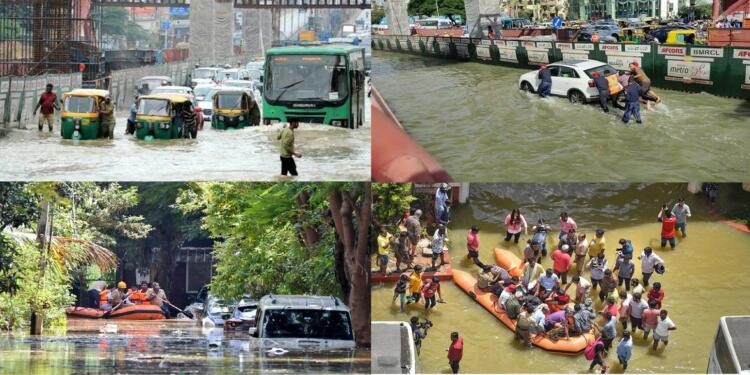Over the last few days, the Silicon Valley of India has been facing the problem erstwhile not witnessed in its localities. Most Banglorians have extensively used the Internet to communicate about their problems in the event of flooding in the city. There is an irony in it though. It is tough and frankly emotionally torturing to believe, but the people crying about floods are themselves responsible for it. Yes, they are the ones who did not conduct the due diligence before buying houses. They are the ones who hobnobbed with builders, making the city a hell to live in.
Understanding Bangalore’s history
Like every city housing modern day corporate workers, Bangalore also developed over the coffins of nature. Yes, historically Bangalore was not such a wreck that you are seeing today. In fact, the city was so green that in the first decade of the 20th century, it earned its reputation as the “Garden city” of India.
Greenery enabled by the availability of water from the Kaveri River made it a happy place to live in. But just like most changes in India, fortunes of Bangalore catalysed by increase in living standard took a radical shift after the liberalisation of the economy in 1991.
IT sector and demand for more houses
Bangalore became a hub of computers, which in broad terms means that Bangalore now started to house big IT companies. The government of the day enabled this growth and it was only a matter of time before the city’s reputation changed from “Garden city” to “Silicon Valley of India”. Unfortunately, the change did not remain to lexicons only. The spirit of Bangalore with respect to the Gardens also took a radical shift. Here is how.
By the beginning of this millennium, Bangalore had started to become a hotly demanded destination for nerdy IITians. Infosys being headquartered in the city played a big role. Soon authorities felt the need for transforming the housing sector of the city. Earlier, the prices did grow along with the demand, but it was a steady and natural growth. Now the same property dealers were watching an exponential rise in demand.
Comparing old Bangalore to the new one
Economics 101 tells us that sudden rise in demand creates upward pressure on price. This is exactly what happened in Bangalore. However, its ecological consequences turned out to be disastrous. Earlier, Bangalore was divided into two distinct zones, namely ridges and valleys. Population used to stay in ridges, a long and narrow watershed. They used to eat food produced in the valleys, the agricultural zone of the city.
To provide water to these farms, lakes were created. A lot of artificial canals were also created to use water for irrigation. The city was thriving well. Though compared to today, the growth was slow but it was stable and Bangalorians did not have to face an annual seasonal disaster. With increased population demand, builders started to acquire more and more land.
Disappearance of drains
Soon valleys and ridges, the two components of the city interdependent on each-other, started to witness more construction projects. The first children of nature to face the brunt of reckless projects were minor drains. When they started to disappear, no one batted an eye. Certainly, people were looking at their immediate needs, and living in the city was that need. The fact that it impacted agricultural zones also did not ring the bell since the alternative was available to them. People settling in the city had more money than average Indians. So, they could dole out a few more bucks to import them from outside.
Also Read: Asia’s biggest VFX-Animation studio is now in Bangalore
The irony
Most of the drains and lakes disappeared, making way for newer construction projects. According to an estimate, the 43 lakes contributing to Bangalore’s reputation as “Garden city” were taken over by builders. These lakes were filled with soil taken out by digging empty lands and buildings were raised on them.
In other words, the buildings in which these Bangalorians are sitting and tweeting about the flood in their locality are actually obstructions to the flow of water. It is actually them and their parents who caused problems for nature. Nature is just paying them back.
Support TFI:
Support us to strengthen the ‘Right’ ideology of cultural nationalism by purchasing the best quality garments from TFI-STORE.COM































